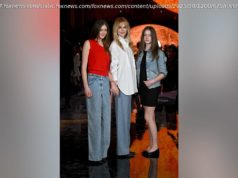 If snow falls on the ground and no one sees it on Instagram, did it really happen?
If snow falls on the ground and no one sees it on Instagram, did it really happen?
The answer to that question is a firm “No”, much to the chagrin of social media users around the United Kingdom today. There will be no flurry of Likes to accompany today’s flurry of snow, as one by one we each realise it is damned impossible to take a good picture of falling snow on our phone cameras.
A photo posted by Mamá 2.0 (@mama2punto0) on Jan 13, 2017 at 4:55am PST
The question is, why?
“All photography is dependent on light irrespective of camera type,” says Matthew Hawkins, a senior lecturer in photography at The University of the Arts, London. “Snowflakes usually fall in times of low contrast and relatively low levels of light.
“This increases the duration of exposure which becomes too long to freeze the motion of an inherently translucent flake.”
So it seems that, provided you’re not trying to shoot on a Nokia 3310, it might not actually be your phone that is the problem. In recent years phone cameras have become incredibly advanced, and the World Photography Organisation even has awards for mobile phone photos.
That said, phone cameras are obviously less advanced than expensive, professional DSLRs, and a lot of digital cameras actually have a “snow mode”, designed to help with the lighting issues that occur when photographing bright, white snow. «Snow scenes generally tend to come out underexposed, so exposure compensation (adding more stops) is usually needed and the automatic settings within a phone camera don’t compensate for this,» says James Jones , a freelance photographer.
Lauren Winsor, a photography lecturer at Kingston University, adds: “The shutter simply isn’t quick enough to freeze the majority of falling snow. It’s therefore either lost to near invisible motion blur or rendered as inelegant white, out of focus blobs.”
Given that your iPhone is currently trying to catch up with a theatre mode , it’s no wonder that it’s not really designed for the complexities of snow.
But if – as Hawkins says – these problems occur with fancy cameras as well as your phone, then why are your snow photos so underwhelming?
The answer to the question might actually be the answer to life’s many questions: you’re just not very good.
A photo posted by kayleepaterson94 (@ironcreature94) on Jan 12, 2017 at 6:13am PST
When I ask Lewis Bush, a photography lecturer (who is currently working on a project that uses satellite imagery for another perspective on the refugee crisis ), why it’s so hard to capture a good picture of falling snow, he says it’s isn’t “if you know how”.
Multiple online guides have sprung up to help you get this knowledge, and Paul Moore, of iphonephotographyschool.com offers eight tips for the perfect wintery photo. “Depending on the light and the weather, snow can take on different color hues or even end up a dull gray color,” he writes, advising that it can instead be fixed in editing. A simple black and white filter or a photo editing app can change everything.
And while you’re here, what about nature’s other trickiest photography subject, the humble moon? Bush has advice for any amateur phone photographers looking to capture the big cheese. “The moon is hard, so shoot with manual exposure controls if your phone has them, you could also try using telephoto adaptors that clip on to your phone camera or even borrowing a telescope and shooting through it,” he says.
But if the snow continues to fall and you can’t afford a swanky camera, what on earth should you do next?
“Shoot towards something dark,” says Bush. “White snow isn’t like to appear very well on a white background, and use a flash if it’s dark.
“Also, maybe question whether the world really needs more photographs of snow?”
Each video starts the same way: with a disclaimer.
“I’m not in any way trying to brag,” says beauty vlogger Fleur De Force in her “What I Got For CHRISTMAS 2016!” video, before speaking for 13 minutes about her Christmas presents, which include a £209 dress, £220 earrings, and £805 ankle boots. Some variation of these words are uttered in the videos of YouTubers, big and small, who showcase their yuletide gifts for the world to see each year.
“I’m not doing this to show off my presents at all,” says vlogger Tanya Burr in her 2014 video (presents of note: a £180 duck egg Roberts radio and a £300 Kitchen Aid mixer). But if YouTubers aren’t creating “What I got for Christmas videos” to brag or to boast, why are they doing it?
Burr’s answer is simple. In that very same video she explains: “I’m doing this because so many of you have requested it”. This is the first and most important defence of the conspicuous consumption on display in these clips. “What I got for Christmas” videos have been widely requested by YouTubers’ fans since the tag began in the late Noughties, and are hardly causing the commercialisation of Christmas so much as reflecting it.
“I do get why people are horrified by the onslaught of perfectly-presented beauty and lifestyle gurus talking about all the designer things they got for Christmas,” says Lex Croucher, a lifestyle vlogger with over 129,000 subscribers, “but I still actually enjoy watching all types of haul videos.”
Sophia Grace via YouTube
Croucher no longer makes any haul videos herself, as her channel now focuses less on beauty and fashion and more on her vegan lifestyle, politics, and comedy. Her conflicted response to Christmas hauls – that they can be at once jarring but also incredibly entertaining – reflects the complexity of the situation.
Gemma Tomlinson, a blogger and vlogger with over 88,000 subscribers, has similarly nuanced opinions. She no longer makes Christmas hauls since switching to cruelty-free beauty products and attempting to make more ethical choices about her purchases, but is unsure as to whether vloggers are directly fuelling the rise of Christmas consumerism.
“I definitely think these types of videos have a place, it’s mostly escapism and can also be informative for people as they might spot things they like themselves,” she says. “I do think it can fuel comparison and an addiction to materialism but so does our society in general, I suppose. The fact of the matter is these videos get lots of views, so vloggers will make the content the audience demands.”
For YouTubers, more views mean more money, so it is possible that Christmas haulers are not acting entirely altruistically in fulfilling their fan’s fancies. Yet whilst it is unfair to criticise YouTubers for making money in this way (everyone has to eat, after all), some vloggers go further to legitimately profit from their “What I got for Christmas” videos. Underneath Fleur De Force’s video , for example, is a list of links as to where her viewers can purchase the presents on show. Each link is affiliated (you can tell because they have been shortened, and when you click on them the URL redirects via ShopStyle, who run an affiliate program) – meaning she directly profits every time it is clicked. YouTubers are legally free to use these affiliate links without disclaiming or disclosing that they profit from them, but many feel it is better, ethically, to tell their young viewers when they are doing so.






